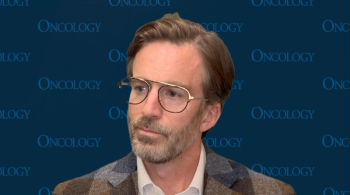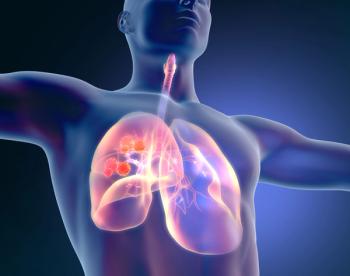
Adding a Vaccine to Immunotherapy in Lung Cancer: Will It Improve Outcomes?
Researchers studied the combination of a cellular vaccine known as HS-110 and nivolumab in an early-phase trial of patients with advanced non–small-cell lung cancer.
The combination of a cellular vaccine known as HS-110 and nivolumab was well tolerated and showed promising efficacy in an early-phase trial of patients with advanced non–small-cell lung cancer (NSCLC).
HS-110, also known as viagenpumatucel-L, is an allogeneic cellular vaccine derived from a human lung adenocarcinoma cell line transfected with the gp96-Ig fusion protein. “To be effective, immune checkpoint blockade requires expansion and intratumoral infiltration of tumor-specific T cells,” said
Morgensztern presented results of the phase I/II
The median age in cohort A was 65 years, and 66 years in cohort B. Just over half of both cohorts were female, and more than 80% were white. Most patients had adenocarcinoma, though a few patients in each cohort had squamous cell histology.
In cohort A, the objective response rate (ORR) was 21.4%; there were 9 partial responses, and 12 patients has stable disease (29%), for a disease control rate of 50%. The median overall survival (OS) in cohort A was not yet reached. When divided based on low or high levels of CD8+ tumor-infiltrating lymphocyte counts, the median OS was still not reached, but the 12-month OS rate was 75% in low patients and 50% in high patients. The 12-month OS rate was 44% in PD-L1–negative patients, and 54% in PD-L1–positive patients. The median progression-free survival (PFS) was 2.6 months.
Interestingly, there was a difference in OS based on whether or not the patient experienced an injection site reaction, which suggests an immune response. Those with such reactions had a median OS that wasn’t yet reached, compared with 7.2 months in those who did not, for a hazard ratio of 0.15 (95% CI, 0.05–0.45; P = .0001).
In cohort B, the ORR among 20 evaluable patients was 15%, with 3 partial responses and 8 patients with stable disease (40%), for a disease control rate of 55%. The median PFS was 2.7 months.
Most patients experienced at least one treatment-emergent adverse event (TEAE). In cohort A, 31.8% of patients had a grade 3 or higher TEAE; there were 2 grade 5 TEAEs, including a myocardial infarction and a pulmonary embolism. In cohort B, 22.6% had a grade 3 or higher TEAE.
“In tumors with lower immunogenicity like NSCLC, the question of how to turn on the immune response is an important issue,” said
Still, the results are impressive, she said. “Studying the responders would be key to understand the mechanism of response and develop biomarkers to select those patients” that might benefit, she said.
Newsletter
Stay up to date on recent advances in the multidisciplinary approach to cancer.


















































































